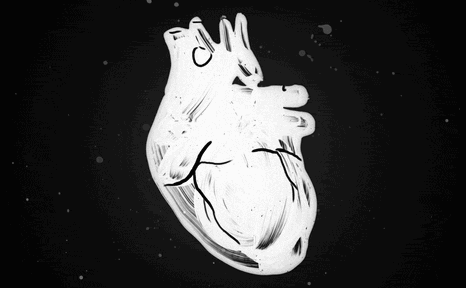Cardiovascular disease is a typical lifestyle disease, and a healthy lifestyle can prevent 80% of cardiovascular diseases. Among several lifestyles, diet tends to come first.
Recently, Zhou Meigeng, He Yuna and others of the Chinese Center for Disease Control and Prevention published a 16-year analysis of the diet of Chinese people, and insufficient intake of 3 foods is the main cause of cardiovascular disease.

Experts interviewed
Zuo Xiaoxia, director of the nutrition department of the Eighth Medical Center of the Chinese People's Liberation Army
Fan Zhihong, Professor, College of Food Science and Nutritional Engineering, China Agricultural University
3 types of food inadequacy are the main causes of heart disease
The study, published in the international medical journal The Lancet, comprehensively analyzed the diets of Chinese provinces, and from 2002 to 2018, insufficient intake of fruits, whole grains and vegetables was the main dietary risk factor for cardiovascular disease in China.
The study found that in 2002~2018, the average consumption of whole grains, soybeans, nuts, vegetables, fruits, red meat and sugary drinks showed an upward trend. However, with the exception of red meat and sugary drinks, the average intake of other foods is still below the recommended levels set out in China's national dietary guidelines.
In addition, inadequate intake of fruits, whole grains, and vegetables was a major dietary risk factor for ischemic heart disease, ischemic stroke, bleeding, and other strokes, while inadequate intake of nuts and soy and high sugar-sweetened beverages were only associated with ischemic heart disease mortality.
Heart-friendly diet with 4 grades
The American Heart Association classifies the current prevalent dietary pattern into four grades and rates whether it is beneficial for heart health.
Level 1
Above 85 points
Deshu, Mediterranean diet, pescatarian and lacto-ovo vegetarian
The Deshu diet received full marks, emphasizing a balanced intake of fruits and vegetables, whole grains, legumes, nuts, as well as low-fat dairy products, lean meats, poultry, and fish.
The Mediterranean diet is second only to the Deshu diet, with an emphasis on fruits and vegetables, whole grains, legumes, nuts, fish and extra virgin olive oil, as well as moderate amounts of red wine.
Both vegetarian diets are not vegan and get their protein from foods like fish, eggs, dairy products, etc.
Level 2
75~85 points
Vegan and low-fat diet
Vegan is a plant-based diet that does not contain animal foods; A low-fat diet is a fat-intake restriction to less than 30% of total calories. Both dietary patterns require limiting alcohol, added sugars, and beverages.
Level 3
55~74 points
Very low-fat and low-carb water diet
Very low-fat diets limit fat intake to less than 10% of total calories, including the Onis diet, Alzheimer's diet, etc. The Onis diet recommends foods rich in dietary fiber, replacing partially refined white rice noodles with whole grains, and emphasizing the reduction of processing of ingredients.
The low-carb water diet is to limit carbohydrates to 30%~40% of total calories, including the South Beach diet, regional diet and low glycemic index diet. The regional diet promotes 40% of calories from carbohydrates, 30% from protein, and 30% from fat.
Level 4
Below 55 points
Paleolithic diet, very low-carb water/ketogenic diet
The Paleolithic diet, also known as the paleo diet, excludes whole grains, refined grains, legumes, oils, and dairy products.
Very low-carb water diet/ketogenic diet, which limits carbohydrate intake to less than 10% of total daily calories and eats very few staple foods.
The 1st level diet pattern is suitable for most people's reference, and the 2nd, 3rd, and 4th level diet patterns have their own advantages and disadvantages, mainly for some groups of people, not recommended for the general population, and those in need are recommended to try under the guidance of a doctor.
A heart-care meal suitable for Chinese people
A heart-protecting meal plan should be scientifically matched and cooked, while controlling energy, ensuring nutrition, and food is still accessible, ready and like to eat by ordinary people.
Sodium reduction and potassium increase
Season with seasonings
There are always graduated salt spoons, salt shakers, etc. at home, generally stir-fried a dish with a spoonful (2 grams) of salt; Use low-sodium salts, or replace sodium salts with other seasonings; Eat out as light as possible and tell the store to "add less salt".
Eat enough fruits and vegetables
Make a "suit" staple
The insufficient intake of dietary fiber of Chinese people is mainly in the intake of whole grains and grains, and the intake of vegetables and fruits is low.
It is recommended to mix some buckwheat, red beans, etc. in staple foods such as rice and white noodles, or replace some staple foods with potatoes and corn.
Ensure at least 1 kilogram of vegetables and half a kilogram of fruits every day, vegetables should be mainly dark, such as spinach, rape, celery, artemisia, purple cabbage, perilla, etc., fruits can preferably choose varieties with lower sugar content, such as cherries, cherry tomatoes, grapefruit, apples, etc.
Limit red meat intake
Egg milk should be sufficient
Increase the proportion of high-quality protein in the diet and reduce the proportion of fat. First, we should eat more white meat such as fish and chicken, and reduce the consumption of red meat such as beef; Second, to consume enough egg milk, drink 1 cup of milk a day, eat 1 egg, if obesity and high blood pressure are serious, you can choose low-fat or skim milk; Third, to eat enough soy products, soy milk, tofu, dried tofu are all good choices. ▲
Editor of this issue: Deng Yu